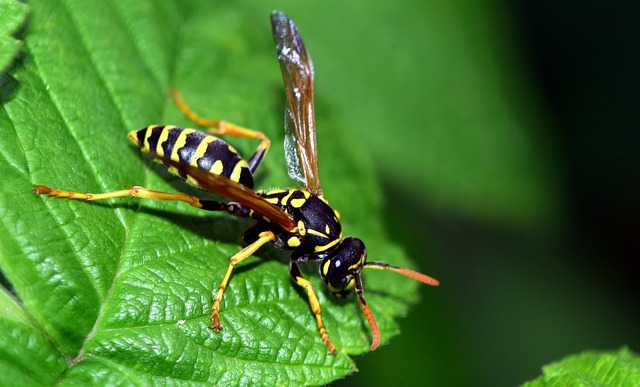Managing Pet Allergies in Your Home
Managing pet allergies in your home requires attention to detail and a willingness to make changes to create a safe and healthy environment for everyone. In this article, we will discuss the importance of managing pet allergies, provide tips on how to reduce allergen exposure, and offer advice on creating a pet-friendly home that works for you.
The first step in managing pet allergies is to understand what triggers an allergic reaction. The most common culprits are dander, saliva, and urine from pets. Dander is made up of tiny scales that fall off your pet’s skin and can become airborne, while saliva and urine contain proteins that can cause allergic reactions.
To reduce allergen exposure in your home, it’s essential to adopt a strict cleaning schedule. This includes daily vacuuming with a HEPA-filter vacuum cleaner, as well as regular deep cleaning of surfaces and upholstery. You should also wash your pet’s bedding regularly and consider using a dehumidifier to reduce moisture levels.
Another key step is to reduce the amount of dander on your pets’ fur. Regular grooming can help reduce shedding, while brushing with a slicker brush or a rubber brush can help remove loose hair. Bathing your pet regularly can also help reduce dander, but be sure to use a gentle shampoo and avoid over-bathing.
If you’re considering bringing a new pet into your home despite your allergies, there are some breeds that may be more suitable for you than others. Breeds with low-shedding coats, such as Poodles and Bichon Frise, may be a good option.
The Importance of Pet Dental Care is crucial in reducing the amount of bacteria and dander in your home. Regular dental care can help reduce the amount of saliva and urine that’s left on surfaces, making it easier to clean and reducing allergen exposure.
When traveling with your pet, it’s essential to take steps to minimize allergen exposure. This includes avoiding public areas where pets are present, such as parks and pet stores, and washing your hands thoroughly after handling your pet.
Traveling Safely with Your Pet is also important in reducing allergen exposure. By taking steps to minimize your pet’s exposure to new environments and surfaces, you can reduce the amount of allergens they bring back into your home.
If you’re experiencing severe allergies or asthma symptoms, it’s essential to consult with a healthcare professional for personalized advice. They can help you develop a treatment plan that includes medication, lifestyle changes, and home modifications to create a safe and healthy environment.
Allergy Prevention | AAFA.org offers valuable resources and information on preventing allergies in children. By following these tips and taking steps to reduce allergen exposure, you can help prevent allergies from developing in the first place.
In addition to managing pet allergies, there are also steps you can take to create a pet-friendly home that works for everyone. This includes using HEPA-filter air purifiers to remove allergens from the air, as well as regular deep cleaning of surfaces and upholstery.
Pediatric Food Allergy Prevention Program is a valuable resource for parents who want to prevent food allergies in their children. By following these tips and taking steps to reduce allergen exposure, you can help create a safe and healthy environment for your child.
By following the tips and advice outlined in this article, you can take control of managing pet allergies in your home and create a safe and healthy environment for everyone. Remember to always prioritize your health and consult with a healthcare professional if you have severe allergies or asthma symptoms.
Creating a Pet-Friendly Home
Creating a pet-friendly home requires attention to detail and a willingness to make changes. Here are some tips on how to create a safe and healthy environment for everyone:
* Use HEPA-filter air purifiers to remove allergens from the air
* Regularly deep clean surfaces and upholstery with a HEPA-filter vacuum cleaner
* Wash your pet’s bedding regularly and consider using a dehumidifier to reduce moisture levels
* Brush your pet regularly to reduce shedding and loose hair
* Bathe your pet regularly, but use a gentle shampoo and avoid over-bathing
* Consider using a pet-friendly mattress protector and upholstery covers
By taking these steps, you can create a pet-friendly home that works for everyone.
Reducing Allergen Exposure
Reducing allergen exposure is crucial in managing pet allergies. Here are some tips on how to reduce allergen exposure:
* Vacuum regularly with a HEPA-filter vacuum cleaner
* Deep clean surfaces and upholstery regularly
* Wash your pet’s bedding regularly
* Use a dehumidifier to reduce moisture levels
* Brush your pet regularly to reduce shedding and loose hair
* Bathe your pet regularly, but use a gentle shampoo and avoid over-bathing
By taking these steps, you can reduce allergen exposure and create a safe and healthy environment for everyone.
Conclusion
Managing pet allergies in your home requires attention to detail and a willingness to make changes. By adopting a strict cleaning schedule, reducing allergen exposure, and creating a pet-friendly home, you can take control of managing pet allergies and create a safe and healthy environment for everyone. Remember to always prioritize your health and consult with a healthcare professional if you have severe allergies or asthma symptoms.
References
* The Importance of Pet Dental Care
* Traveling Safely with Your Pet

